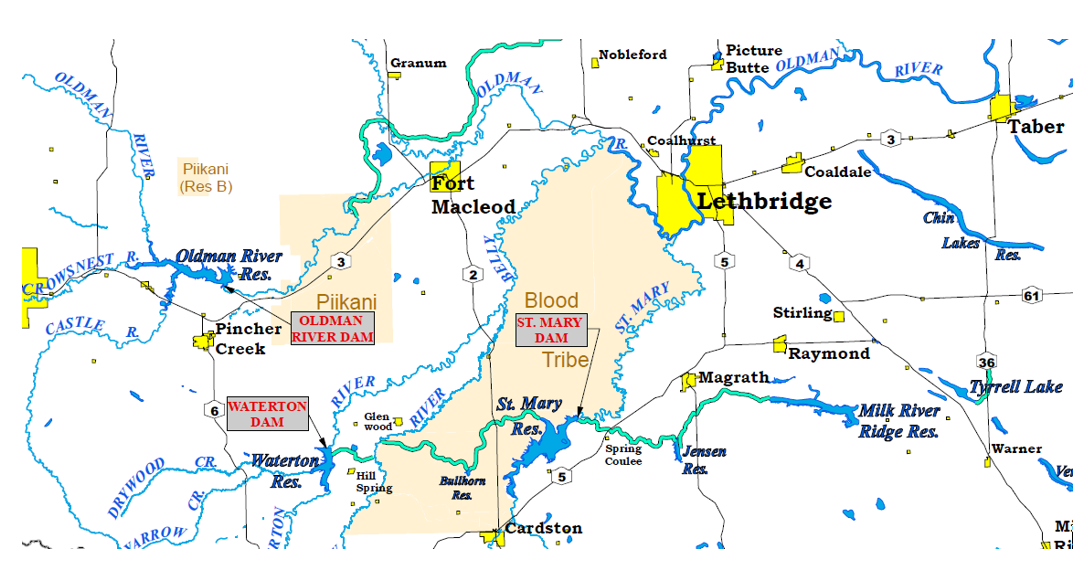Welcome back to Water Wednesday. Last week, we offered some myth-busting around xeriscaping. Today, we dive into the ‘how’ of transforming your yard.
If you wrestle with keeping your lawn green through a southern Alberta summer, you’re not alone. Turfgrass might look neat and tidy, but it’s thirsty, stubborn and not exactly built for our semi-desert climate. As we look ahead to the 2026 growing season, it’s the perfect time to rethink what a beautiful, functional yard can look like - without all the watering, mowing and turf-related headaches!
Dealing with turf
Turf grasses like Kentucky bluegrass aren’t ideal for southern Alberta’s semi-arid climate. Designed for aesthetics, they consume excessive water and form a tough thatch layer, making it hard to grow anything else.
Exploring new options
Explore low-water cover alternatives like micro clovers, kinnickinnick, creeping thyme and sedum (for that succulent-desert touch). These are all short-stature, water-wise plants that still provide the lush, colourful ground you know and love. And, as a major bonus, a couple of these options sport beautiful flowers, providing an amazing source of food for pollinators.
If you’re feeling a bit adventurous, try native mixed-grasses! Key species like fescues, wheatgrasses and blue grama require little (if any) irrigation. They also carry diverse hues of red, blue, silver, beige and green. (Refer to the Prairie Urban Garden handbook from Oldman Watershed Council, if you didn't get the chance last week.)
Getting creative
If ground covers aren't your thing, consider creative, mulch-based designs with drought-tolerant native and cultivated plants. Popular natives include prairie coneflower, wild bergamot and prairie smoke. Cultivated options like lavender, peony and sea holly add flair. Be sure to research your choices - some spread fast, others need extra care.
Consider working with a landscaper or carefully researching xeriscaped yards as examples. Because, as they say, imitation is the sincerest form of flattery!
Mixing in veggies
If edible plants are more your thing - or if yard space is tight - consider mixing garden veggies with ornamental flowers, grasses or ground covers. While not all veggies are drought-tolerant, this combo can help suppress weeds, deter pests and improve soil health. Do a bit of research to find drought-tolerant or heat-loving cultivars - they’re out there! If heirlooms aren’t your style, stick with low-water options like herbs, beans, peppers, potatoes, onions, asparagus and garlic.
Fun fact: legumes like beans and clover are "nitrogen fixers", converting atmospheric nitrogen into a form plants can use. This boosts nearby plant growth, a method used by Indigenous communities for thousands of years, called the Three Sisters.
Seeking shade
If you're after that classic dappled shade look, consider planting a recommended tree species from the City of Lethbridge Tree Guide. It outlines the requirements for growth for each recommended species, as well as potential benefits and drawbacks. Consider discussing your yard’s unique features with a nursery attendant prior to purchasing a tree. That way, you get the best results for your specific space.
The heavy lifting
The truth is, while xeriscaping sounds exciting, it can be a big job. Even basic landscaping is tough work - especially with busy schedules. But don’t worry! Xeriscaping is flexible and can move at your pace.
Start by replacing a patch of turfgrass with drought-tolerant plants. Just remember to remove that stubborn thatch first - it needs to go for your new plants to thrive. Once cleared, add ground cover, tall grasses or flowers. Expand the area gradually over summer weekends or jump around the yard as you like. Your space will evolve into something uniquely yours.
Like any garden, xeriscaping benefits from planning, ideally in winter (hint hint). Group plants by light, water and harvest needs. It’s much easier to grab herbs when they’re not hidden behind thorny shrubs or delicate blooms.
Xeriscaping isn’t just swapping grass for rocks. Leaving out vegetation can lead to runoff, weeds and increased heat around your home. Instead, replacing turf with drought-tolerant plants offers a creative, low-maintenance way to beautify your yard. It saves on irrigation, supports pollinators and adds a personal, eco-friendly touch to your space.
Here are a few more resources to help you get started:
Next week, Water Wednesday travels to the banks of the Oldman River. There, we explore a unique species of cottonwood tree and its importance to Lethbridge’s water ecosystem.


